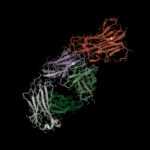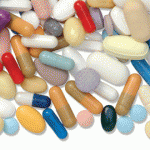 The advent of biosimilar medications has offered the promise of significant cost savings for healthcare systems and patients. Biosimilars are highly similar versions of existing biologic drugs, providing a more affordable alternative once the original biologic patent expires. However, the adoption of biosimilars in the U.S. has been hampered by myriad roadblocks, many of which have placed clinicians in an ethical quandary.
The advent of biosimilar medications has offered the promise of significant cost savings for healthcare systems and patients. Biosimilars are highly similar versions of existing biologic drugs, providing a more affordable alternative once the original biologic patent expires. However, the adoption of biosimilars in the U.S. has been hampered by myriad roadblocks, many of which have placed clinicians in an ethical quandary.
At the heart of this issue is the fundamental clash between the ethical principles that guide a physician’s practice and the economic realities of the healthcare system. Physicians, who have taken an oath to do no harm and act in the best interests of their patients, find themselves navigating a complex landscape in which restrictive formularies and financial considerations clash with their ethical obligations.
Ethics vs. Economics
Physicians are trained to make decisions based on the best interests of their patients, prioritizing their health and well-being above all else. However, the complex web of financial incentives, formulary policies and the reimbursement landscape within the healthcare system often force them to prescribe medications that may not be in the best medical or economic interest of the patient.
This conflict is particularly acute when it comes to the adoption of biosimilars. Physicians are well aware that these lower cost alternatives should provide significant savings for their patients and the healthcare system as a whole. In theory, by prescribing biosimilars, physicians can increase access to essential treatments by improving affordability. However, in a buy-and-bill model, if a physician purchases a biosimilar for $2,000 but is reimbursed only $1,800, they incur a $200 loss for each patient treated. This may jeopardize their ability to provide the best treatment, as well as threaten the financial viability of their practice. Confronted with this financial shortfall, the physician may feel compelled to prescribe the original biologic to ensure economic stability, which conflicts with their goal of delivering cost-effective care.
Restrictive Formulary Policies, Complex Rebate Structures
One of the primary roadblocks to biosimilar adoption is their placement within formularies created by insurance companies and their associated entities. Pharmaceutical companies have employed a range of tactics to maintain the market dominance of their original biologics, even in the face of biosimilar competition.
Many insurance companies and pharmacy benefit managers (PBMs) have implemented restrictive formulary policies that limit the use of biosimilars, either by requiring patients to try the more expensive original biologic first or by financially incentivizing the use of the original product. These policies are often driven by the complex use of rebate traps and discount structures negotiated between pharmaceutical companies, insurers and PBMs. Physicians, who are tasked with prescribing the most medically appropriate treatments for their patients, find themselves in a challenging position. When the negotiated financial margin for the original biologic is more favorable than that for the biosimilar, payers often mandate that physicians must first attempt treatment with the original product, even if it is not the most cost-effective option for the patient.



